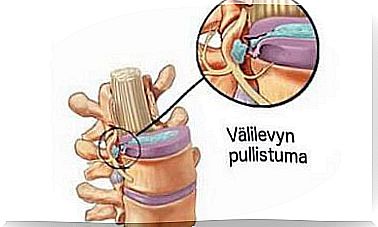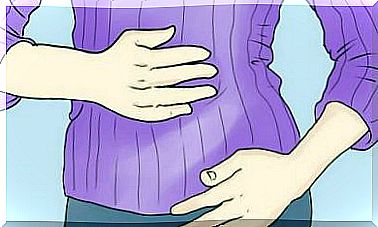The Most Common Food Parasites And Their Prevention

Food parasites are a number of different microorganisms that can endanger human health. These parasites are ingested with food and are able to inhabit some parts of the intestinal tract or produce harmful toxins. It is important to know what the most common food parasites are and to be aware of the necessary steps to avoid parasitic infection.
It is noteworthy that one of the most common reasons to go to the emergency room is food poisoning. This situation often results from poor hygiene habits, which is why a person eventually swallows pathogens that cause digestive problems.
Some of them can even give rise to allergic processes and adversely affect other important organs such as the liver. What other dangers are involved?
In this article, we will tell you more about the parasites that come with food.
Dangers associated with food parasites
Most often, people swallow parasites without knowing they are in food because they are so small. It is also possible that the product contains only eggs of the pathogen, which then hatch in the intestinal tract, causing short-term harm.
This is perhaps the most difficult situation to deal with because the parasite settles inside the host and causes ongoing health problems. It is important to note that such organisms can develop in very different foods: they can be found in fresh products, but also in canned food.
They are found relatively often in meat that has not been processed properly, and also in some fish. When they develop inside the body, they can spread through contact, especially if hand hygiene is not properly maintained.

The most common food parasites
A study published in Advances in Food and Nutrition Research finds that food-borne parasites are one of the most neglected groups of pathogens because they are so insidious and prevalent in marginal populations. In recent years, however, they have spread to other populations and caused unexpected symptoms.
What are the most common food parasites? And how can the risk of infection be reduced? Answering these questions is very important, which is why we will explain the topic in more detail below.
Taenia solium
Taenia solium is also known as barbed wire. This microorganism is found mainly in pork that has not been properly treated or cleaned at the slaughterhouse.
As a result of eating food containing parasites, these barbed worms are allowed to develop inside the gut. They resemble worms in appearance and have the ability to absorb the nutrients in the food we eat.
According to a study published in the journal Parasite Immunology, this can cause a gradual weight loss in a person, which of course leads to a constant state of malnutrition.
The most common food parasites: Echinococcus granulosus
This parasite usually lives in the intestines of dogs. However, studies have shown that it can also be spread to humans through the consumption of contaminated meat, such as pork.
It is an tapeworm-shaped organism, albeit small in size. It induces protein consumption, which reduces the bioavailability of amino acids for human use. As a result, it has a significant detrimental effect on health.
Toxoplasma gondii
This protozoan can cause toxoplasmosis in humans. It is a microorganism living mainly in cats, the transmission of which to a pregnant woman has detrimental consequences for the fetus.
The treatment of toxoplasmosis requires a variety of drugs capable of affecting folic acid synthesis. Thus, the treatment impairs the life of the parasite and the reproductive cycle.
In the clinical picture of toxoplasmosis, flu-like symptoms, such as fever, stand out. This disease can even be fatal in people with a weakened immune system.
Some studies also suggest that transmission of this pathogen may increase the risk of developing schizophrenia in the medium term.
Strategies to minimize risks
One of the most effective procedures for reducing the risk of parasitic infections in food is to be extremely careful with food hygiene. It is very important to wash fresh food properly, with the exception of meat products.
In addition, it is important to ensure that the internal temperature of the food is high enough during cooking, as this is an effective method to destroy any pathogens inside the food.
The same kitchen utensils should never be used when handling raw and cooked food. It is also important to clean kitchen utensils as well as possible and to wash your hands before handling food.
Frozen food should always be thawed in the refrigerator and avoid leaving the product at room temperature. This could promote the hatching of eggs inside or on its surface.

Watch out for food parasites
Getting a parasitic infection from food is relatively common and is a problem that can seriously endanger human health. Not only does it adversely affect nutrient metabolism or their availability, but it can also lead to liver damage and even a life-threatening hypersensitivity reaction.
In addition, for pregnant women, some poisonings are very dangerous because they endanger the life of the fetus. We therefore advise you to always obtain the highest quality raw materials that have passed purity checks and are properly certified.
The food must also be cooked perfectly to ensure that any pathogens living inside are surely destroyed. Products should be stored using safe methods that keep the food in good condition to prevent the growth of parasites.









